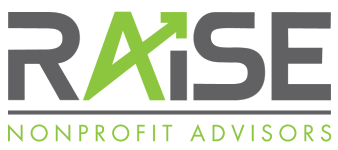This article originally appeared on nonprofitpro.com.
My 10 year-old daughter reads a monthly kids’ magazine that includes a calendar spread featuring obscure but charming national holidays, like National French Fry Day or National Bring-Your-Fidget-Spinner-to-Work Day. This Friday is National Nonprofit Day.
This fact got me thinking: Is there any significance to this day, or is it just a cute marketing ploy? While I can’t speak to the origins of each of the days I learned about flipping through my daughter’s magazine, this coming Saturday Aug. 17, marks a milestone in the history of U.S. nonprofits: It was on this date in 1894 that the Tariff Act became law, a landmark policy change that exempted nonprofits from corporate taxes.
Like Mother’s Day, Secretary’s Day and the rest of the Hallmark holidays, Nonprofit Day undoubtedly provides a nice opportunity to show appreciation to staff, board members and donors by letting them know your nonprofit is glad to have them on board.
Beyond that, National Nonprofit Day prompts something more meaningful: a time to reflect on and celebrate the advancement of the field and its life-changing work. Most holidays in my life are already replete with existing traditions, but I was drawn to National Nonprofit Day, because it presents a blank slate of sorts. There are no Nonprofit Day brunches, dinners or gift-giving (yet). To celebrate, I would like to share some accomplishments I’ve seen the nonprofit sector achieve over the 15-plus years that I’ve served as a professional, lay leader and consultant.
Enabling Direct Impact Giving
When I began my career in development, organizations were just beginning to struggle with how they could cover operating expenses, while responding to the growing number of donors interested in designated giving. I have seen nonprofits demonstrate great flexibility and creativity in personalizing giving opportunities, while still ensuring they are covering the basics.
For example, one of my clients, a private school, struggled with how to engage grandparents in its annual fund. Our firm recommended a “Grandparent Philanthropy Project.” Every new or increased dollar donated by grandparents was earmarked toward an educational initiative chosen by the Grandparents Committee, in consultation with the school’s administration. That collaboration ensured that the selected initiative added value to the school and, in most cases, coincided with expenses that were already anticipated. It also created the opportunity for grandparents to become more directly involved in decision-making, thereby strengthening their connection to the school as supporters. This school just successfully completed its second year of engaging grandparents in the process and providing value to students.
Increased Accountability
In furtherance of their missions, nonprofits have become increasingly impact-driven. Planning, data analysis and performance evaluation have become much more commonplace as nonprofits strive to understand how effective they are (and how much more effective they can be) at meeting their mission. Updates to foundations and boards, as well as annual reports — while sometimes time-consuming and expensive to create –- ensure transparency and hold nonprofits accountable in realizing their goals. This transparency, accountability and demonstration of impact is increasingly demanded as younger generations with new perspectives rise into philanthropic roles. Nonprofits are meeting these new challenges with enthusiasm and leveraging the results to improve their work.
Tapping Into the Power of Social Media
The power of the crowd was always a force with which to be reckoned. (If you haven’t read about how Joseph Pulitzer raised the remaining $100,000 needed for the Statue of Liberty’s base in 1885 from 160,000 donors who responded to his plea in a newspaper, check it out). However, new technologies have provided vehicles to make crowdfunding extremely effective and relatively easy. In a few short years, the number of resources and available platforms has grown exponentially, enabling organizations to reach beyond their donor base to new audiences and raise more funds. By meeting them where they are, crowdfunding has mobilized Millennials, exciting a group that is difficult to engage in giving. While crowdfunding should never replace individual donor relationships, it is a valuable tool to augment a campaign.
Walking the Walk
Early in my career, I worked for a large, multi-million dollar nonprofit with a roster of leading philanthropists. At a staff professional development event, I recall a colleague asking about what the nonprofit was doing to ensure ethical giving — that the dollars it received came from ethical sources. The question was ahead of the answer at the time. Many nonprofits today confront complex questions and are working toward ensuring that their business practices are thoughtful and in line with the mission and values of the organization. It is heartening to see organizations setting goals and creating actionable plans on environmental sustainability, closing the pay gap and ethical leadership.
Overall Professionalization of the Field
How can we integrate our development plan with our overall strategic plan?
How can we leverage our capital campaign to strengthen and grow philanthropy at our organization?
What’s your recommendation on the best software to sync event registration with our CRM?
How can we use cultivation and solicitation as a way to train new leadership?
These are some of the recent questions nonprofit leaders have posed to my firm. Isn’t it exciting that nonprofits, many of them small shops, are so smart, sophisticated and strategic? Nonprofit professionals are increasingly savvy and knowledgeable about best practices and technology. And importantly, they want to learn more. The field is not satisfied with the status quo, but is eager for continued improvement. To meet the desire of nonprofits to move toward greater professionalization, a whole suite of tools and services has developed. As with all such products, it is important to assess the ROI and understand how these tools and services will strengthen your cause.
While National Nonprofit Day may not have the name-recognition of #GivingTuesday, it underscores society’s interest in elevating the exposure of nonprofits and their work. On National Nonprofit Day this year, let’s be both proud of the progress our organizations have achieved and encouraged about accomplishments on the horizon.
Happy National Nonprofit Day!




